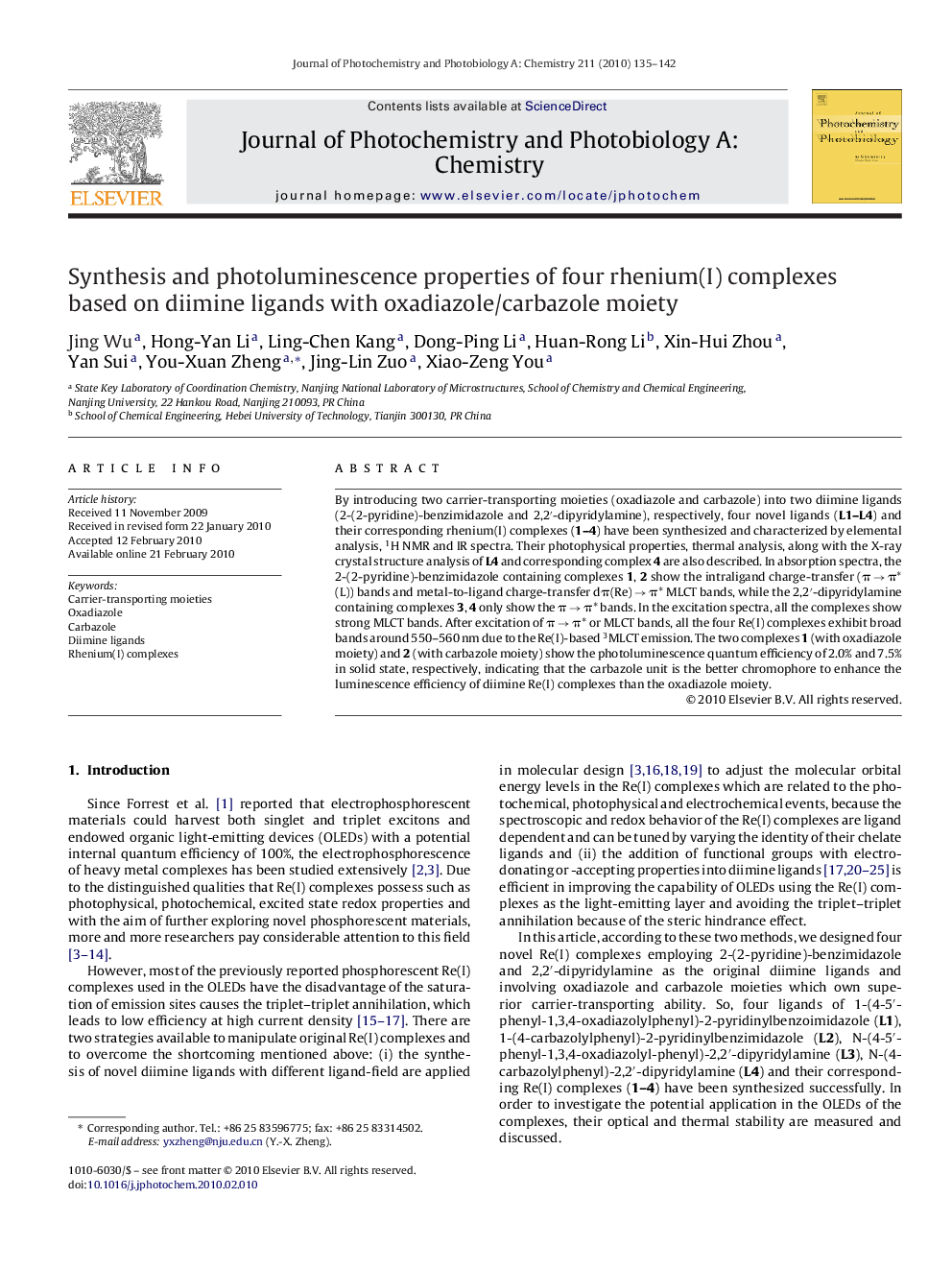| Article ID | Journal | Published Year | Pages | File Type |
|---|---|---|---|---|
| 27675 | Journal of Photochemistry and Photobiology A: Chemistry | 2010 | 8 Pages |
By introducing two carrier-transporting moieties (oxadiazole and carbazole) into two diimine ligands (2-(2-pyridine)-benzimidazole and 2,2′-dipyridylamine), respectively, four novel ligands (L1–L4) and their corresponding rhenium(I) complexes (1–4) have been synthesized and characterized by elemental analysis, 1H NMR and IR spectra. Their photophysical properties, thermal analysis, along with the X-ray crystal structure analysis of L4 and corresponding complex 4 are also described. In absorption spectra, the 2-(2-pyridine)-benzimidazole containing complexes 1, 2 show the intraligand charge-transfer (π → π* (L)) bands and metal-to-ligand charge-transfer dπ(Re) → π* MLCT bands, while the 2,2′-dipyridylamine containing complexes 3, 4 only show the π → π* bands. In the excitation spectra, all the complexes show strong MLCT bands. After excitation of π → π* or MLCT bands, all the four Re(I) complexes exhibit broad bands around 550–560 nm due to the Re(I)-based 3MLCT emission. The two complexes 1 (with oxadiazole moiety) and 2 (with carbazole moiety) show the photoluminescence quantum efficiency of 2.0% and 7.5% in solid state, respectively, indicating that the carbazole unit is the better chromophore to enhance the luminescence efficiency of diimine Re(I) complexes than the oxadiazole moiety.
